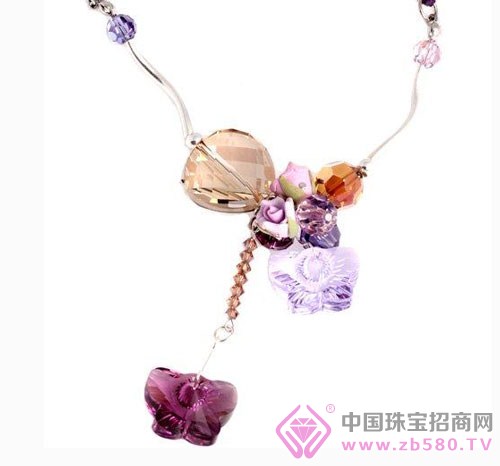What is a gem? The definition given in the gemological textbook is: refers to all materials that have been honed and engraved to become jewelry or crafts. It is a general term for natural jewels and artificial gems. Glass is an artificial gem. Note that the difference is different from natural glass. Although the two have similarities, the difference is more significant.

The composition of ordinary glass is mainly silica (the main component of sand is quartz, which can be used to fire glass). The melting point of quartz is 1750 ° C. When making glass, sodium carbonate (ie soda) and potassium carbonate (potassium base) and calcium oxide are generally added to the quartz sand, so that the melting point will be reduced to about 1000 °C.
Glass used as a gemstone is usually also added with lead, commonly known as lead glass. Because of its high refractive index, it looks very flickering after being cut and formed, resulting in more dazzling refraction. In the gem processing industry, lead glass is also often used to fill in some cracked natural gemstones such as rubies, tourmalines, diamonds, etc.
If certain metal elements are added during the manufacture of the glass, the glass can be rendered in a different color. Among them, a small amount of manganese and iron can make the glass appear pale green, a little more manganese can form lavender; selenium has a similar effect; adding cobalt can make blue glass; copper can be made into cyan or deep Red; nickel can cause blue, deep purple, or even black glass; titanium can cause brownish yellow; trace amounts of gold (about 0.001%) cause the glass to be very sharp; uranium (0.1% to 2%) It is firefly yellow or green; silver compounds can cause orange to yellow.
Gemological parameters of glass (identification characteristics):
Color: various colors
Crystal state: amorphous
Gloss: glass luster
Density: 2.30g/cm3 to 4.5g/cm3
Photographic characteristics: homogeneous bodies, common abnormal extinction.
Polychromism: none
Refractive index: 1.470 to 1.700 (containing 1.80± of rare earth element glass).
UV fluorescence: weak to strong, depending on the color. Generally short waves are stronger than long waves.
Absorption spectrum: no characteristics, depending on the coloring elements.
Enlarged inspection: bubbles, surface caves, elongated empty tubes, flowing lines, "orange peel" effect, rounded faceted ridgeline.
Basic Bedding,Basic Comforter,Basic White Comforter,Home Basics Comforter
SUZHOU HENGRUN IMP. & EXP. CORP.,LTD , https://www.hengrunsz.com
![<?echo $_SERVER['SERVER_NAME'];?>](/template/twentyseventeen/skin/images/header.jpg)